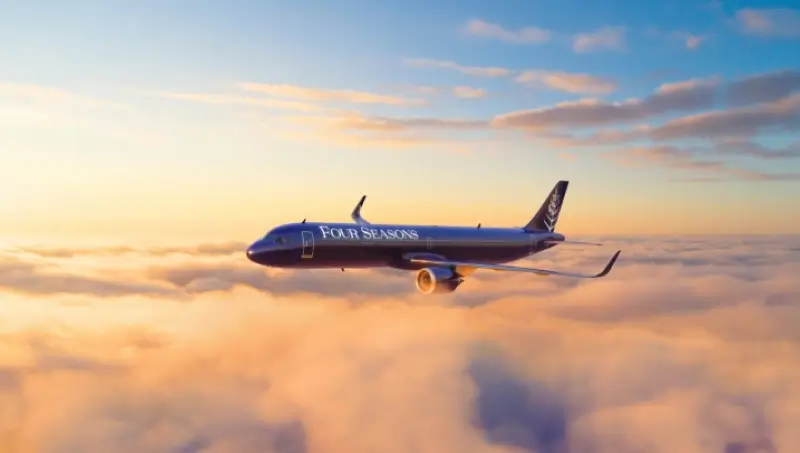
Cathay and Singapore Work Together for SAF
Jun 06, 2024

Cathay Pacific and Singapore Airlines have collaborated to enhance the development and usage of sustainable aviation fuel (SAF) in their operations. This partnership aims to accelerate the transition towards more environmentally friendly aviation practices by sharing expertise and resources. Both airlines recognize the urgent need to reduce carbon emissions and are committed to investing in innovative technologies that promote sustainability within the industry. By working together, they not only strengthen their individual sustainability goals but also contribute to a broader movement towards greener aviation, ultimately benefiting the environment and future generations.
In a groundbreaking move towards sustainable aviation, Cathay Pacific and Singapore Airlines have joined forces to promote the adoption of Sustainable Aviation Fuel (SAF). This collaboration aims to reduce carbon emissions and pave the way for a greener future in the aviation industry. By leveraging their extensive networks and resources, both airlines are committed to advancing SAF production and usage, which is critical in the fight against climate change.
Understanding Sustainable Aviation Fuel (SAF)
Sustainable Aviation Fuel (SAF) is a type of fuel derived from renewable resources, such as waste materials, agricultural residues, and other biomass. Unlike conventional jet fuel, SAF can significantly lower greenhouse gas emissions throughout its lifecycle. The adoption of SAF is essential for the aviation sector, which is under increasing pressure to meet global carbon reduction targets.
The Importance of Collaboration
The partnership between Cathay Pacific and Singapore Airlines showcases the importance of collaboration in addressing climate change. By working together, these two major players in the aviation industry can pool their resources and expertise to accelerate the development and deployment of SAF. This collaboration not only fosters innovation but also sets a precedent for other airlines to follow suit.
Key Benefits of SAF
The use of Sustainable Aviation Fuel offers numerous benefits, including:
- "Significant Reduction in Carbon Emissions": SAF can reduce carbon emissions by up to 80% compared to traditional jet fuel.
- "Utilization of Waste Materials": Many SAF sources are derived from waste, helping to manage waste effectively.
- "Compatibility with Existing Infrastructure": SAF can be used in existing aircraft engines with little to no modification, making it a viable solution for airlines.
- "Support for Local Economies": The production of SAF can create jobs and stimulate economic growth in local communities.
Chart: SAF Emission Reductions Compared to Conventional Jet Fuel
Below is a comparative chart showcasing the emission reductions achieved by using SAF versus conventional jet fuel:
| Fuel Type | Carbon Emissions (g CO2e/km) | Reduction Percentage |
|---|---|---|
| Conventional Jet Fuel | 100 | 0% |
| Sustainable Aviation Fuel | 20 | 80% |
Future Initiatives
Cathay Pacific and Singapore Airlines are not just stopping at collaboration; they have outlined several initiatives to further enhance the use of SAF in their operations:
- "Investment in SAF Research and Development": Both airlines are committed to funding research initiatives that explore innovative ways to produce and utilize SAF.
- "Partnerships with SAF Producers": They are actively seeking partnerships with SAF producers to secure a consistent supply of fuel.
- "Advocacy for Policy Support": The airlines will work together to advocate for government policies that support the sustainable aviation sector.
- "Public Awareness Campaigns": Initiatives aimed at educating the public about the benefits of SAF and sustainable aviation will be launched.
Challenges Ahead
While the collaboration between Cathay Pacific and Singapore Airlines is a positive step, there are challenges that must be addressed for widespread SAF adoption:
- "High Production Costs": SAF is currently more expensive to produce than conventional jet fuel, making it less attractive for airlines.
- "Limited Supply": The availability of SAF is still limited, and scaling up production will take time and investment.
- "Regulatory Hurdles": Navigating the regulatory landscape for SAF can be complex and may hinder rapid adoption.
Conclusion
The partnership between Cathay Pacific and Singapore Airlines represents a significant step toward a sustainable future for the aviation industry. By investing in Sustainable Aviation Fuel and working collaboratively, these airlines are not only reducing their carbon footprint but also setting an example for others to follow. The aviation industry must embrace innovations like SAF to ensure a greener, more sustainable future for generations to come.
As the world becomes increasingly aware of climate change, the commitment of major airlines to sustainability through collaborative initiatives like this is crucial. It is a journey that requires the collective effort of all stakeholders, including airlines, fuel producers, governments, and the public, to achieve meaningful change.
Related Articles

Explore Thailand: The Best Islands to Visit for Paradise, Adventure, and Relaxation

The Ultimate Guide to the Best Islands in Thailand for Your Next Getaway

Do babies need passports? How to get a passport for a newborn

How to get a U.S. passport fast: here’s how to expedite the process

What is Mobile Passport Control: 5 reasons why you should use it

SENTRI vs. Global Entry: A detailed guide

Do you need a passport to go to the Bahamas? Let’s find out

Do you need a passport to go to Mexico? A detailed guide

Do you need a passport to go to Canada? We got the answer

Do You Need a Passport for a Cruise: An Essential Travel Guide

Booster Seat Requirements: All the Rules to Follow in Your Rental Car

What Are the World’s Most Powerful Passports, and How Does Yours Rank?

How to Take a Passport Photo at Home: A Helpful Guide

You've got to have heart! Southwest's new livery

Your opinion: Should water be free on low cost carriers?

Young women bolder than guys as solo travellers
